Gallery
Image Type
Morphological Structure
Clades
Phytophthora spp. in Clade 4: portion of the seven-loci ML phylogeny featuring the type cultures of 212 described species (by T. Bourret). Notice the position of P. boodjera Ex-type CBS 138637 = S&T BL 181. Gloria Abad, USDA S&T.
Phytophthora spp. in Clade 4: Morphological Tabular key (PDF) and Tabular key legends (PDF) in IDphy2 KEY SECTION. Notice the data of P. boodjera Ex-type CBS 138637 = S&T BL 181. Gloria Abad, USDA S&T.
 Phytophthora boodjera nbsp;colony of the ex-type grown for 7 days at 20deg;C on: a) carrot agar, b) V8reg; agar, c) malt extract agar, d) half-strength potato-dextrose agar
Phytophthora boodjera nbsp;colony of the ex-type grown for 7 days at 20deg;C on: a) carrot agar, b) V8reg; agar, c) malt extract agar, d) half-strength potato-dextrose agar
Phytophthora boodjera colony of the ex-type grown for 7 days at 20°C on: a) carrot agar, b) V8® agar, c) malt extract agar, d) half-strength potato-dextrose agar
 ovoid to broadly ovoid papillate sporangia of Phytophthora boodjera formed on V8A flooded with soil extract
ovoid to broadly ovoid papillate sporangia of Phytophthora boodjera formed on V8A flooded with soil extract
ovoid to broadly ovoid papillate sporangia of Phytophthora boodjera formed on V8A flooded with soil extract
aplerotic oospores of P. boodjera with paragynous antheridia; scale bar = 20 μm
Phytophthora spp. in subclade 6b: portion of the seven-loci ML phylogeny featuring the type cultures of 212 described species (by T. Bourret). Notice the position of P. borealis Ex-type CBS 132023 = S&T BL 93. Gloria Abad, USDA S&T.
Phytophthora spp. in subclade 6b: Morphological Tabular key (PDF) and Tabular key legends (PDF) in IDphy2 KEY SECTION. Notice the data of P. borealis Ex-type CBS 132023 = S&T BL 93. Gloria Abad, USDA S&T.
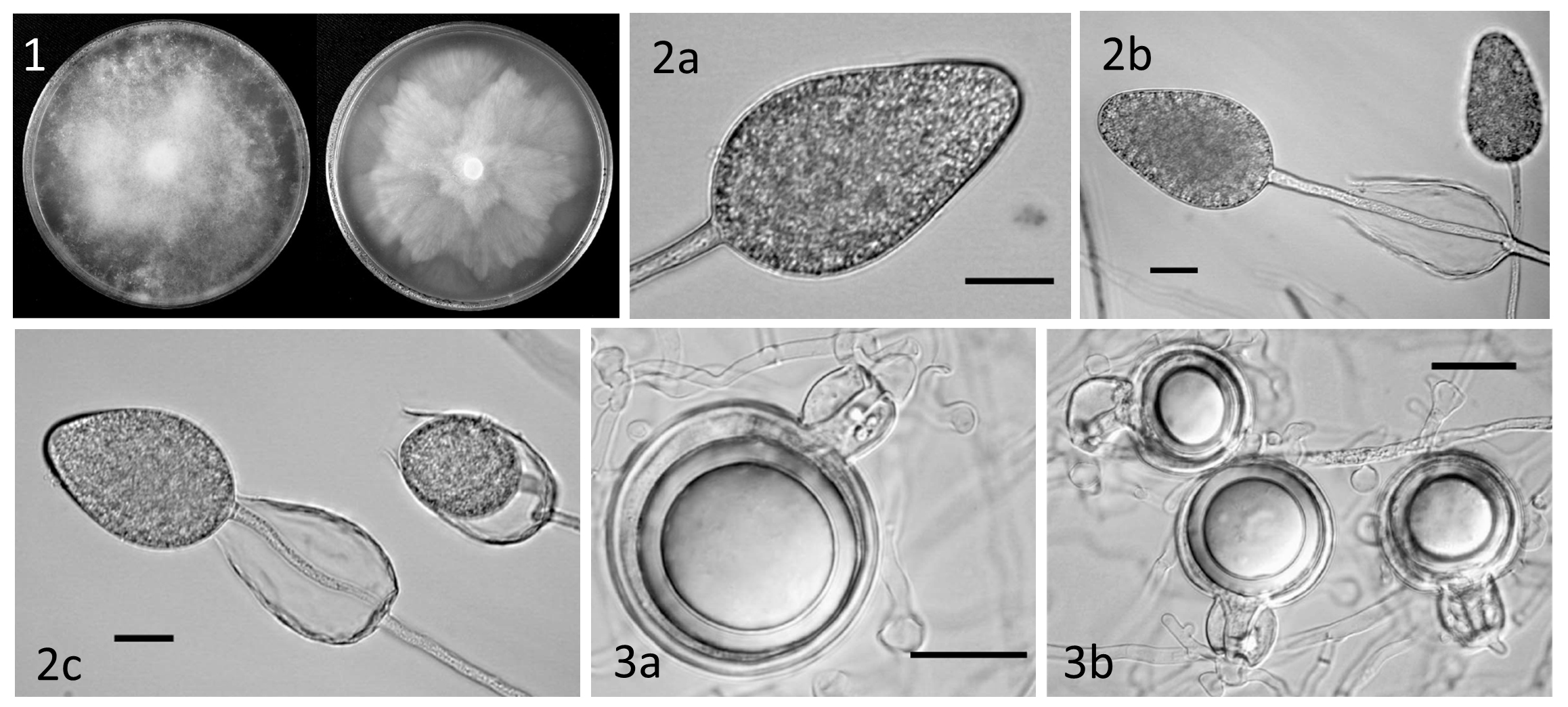 Phytophthora borealis nbsp;asexual and sexual phases of the ex-type: (a) isolate AKWA58.1-0708 on V8S (left) and CA (right) at 15 days, (2a-c) semipapillate persistent sporangia (2b,2c) with external proliferation, (3a-3b) oogonia, amphigynous antheridia and oospores formed by isolate AKWA 72.3-0708 when paired with A2 tester of P. cryptogea ; Scale bars = 20mu;m; photos by Hansen et al 2012.
Phytophthora borealis nbsp;asexual and sexual phases of the ex-type: (a) isolate AKWA58.1-0708 on V8S (left) and CA (right) at 15 days, (2a-c) semipapillate persistent sporangia (2b,2c) with external proliferation, (3a-3b) oogonia, amphigynous antheridia and oospores formed by isolate AKWA 72.3-0708 when paired with A2 tester of P. cryptogea ; Scale bars = 20mu;m; photos by Hansen et al 2012.
Phytophthora borealis asexual and sexual phases of the ex-type: (a) isolate AKWA58.1-0708 on V8S (left) and CA (right) at 15 days, (2a-c) semipapillate persistent sporangia (2b,2c) with external proliferation, (3a-3b) oogonia, amphigynous antheridia and oospores formed by isolate AKWA 72.3-0708 when paired with A2 tester of P. cryptogea; Scale bars = 20μm; photos by Hansen et al 2012.
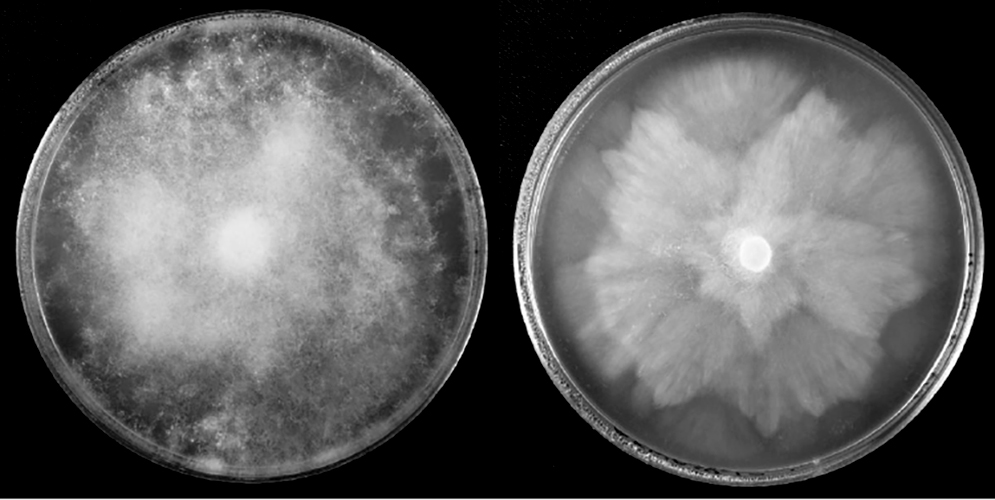 Phytophthora borealis nbsp;culturesnbsp;of the ex-type:nbsp;isolate AKWA58.1-0708 on V8S (left) and CA (right) at 15 days; photonbsp;by Hansen et al 2012.
Phytophthora borealis nbsp;culturesnbsp;of the ex-type:nbsp;isolate AKWA58.1-0708 on V8S (left) and CA (right) at 15 days; photonbsp;by Hansen et al 2012.
Phytophthora borealis cultures of the ex-type: isolate AKWA58.1-0708 on V8S (left) and CA (right) at 15 days; photo by Hansen et al 2012.
 Phytophthora borealis nbsp;asexualnbsp;phasenbsp;of the ex-type: nonpapillate persistent sporangianbsp;with internal proliferation; Scale bar = 20mu;m; photos by Hansen et al 2012.
Phytophthora borealis nbsp;asexualnbsp;phasenbsp;of the ex-type: nonpapillate persistent sporangianbsp;with internal proliferation; Scale bar = 20mu;m; photos by Hansen et al 2012.
Phytophthora borealis asexual phase of the ex-type: nonpapillate persistent sporangia with internal proliferation; Scale bar = 20μm; photos by Hansen et al 2012.
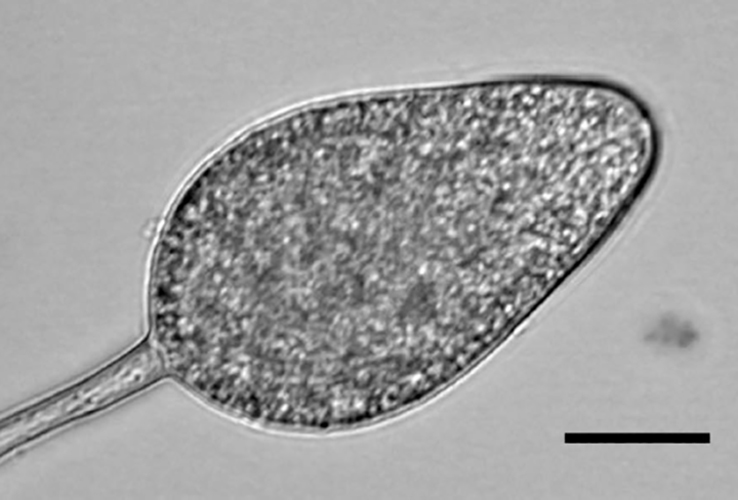 Phytophthora borealis nbsp;asexualnbsp;phasenbsp;of the ex-type: nonpapillate persistent sporangium; Scale bar = 20mu;m; photos by Hansen et al 2012.
Phytophthora borealis nbsp;asexualnbsp;phasenbsp;of the ex-type: nonpapillate persistent sporangium; Scale bar = 20mu;m; photos by Hansen et al 2012.
Phytophthora borealis asexual phase of the ex-type: nonpapillate persistent sporangium; Scale bar = 20μm; photos by Hansen et al 2012.
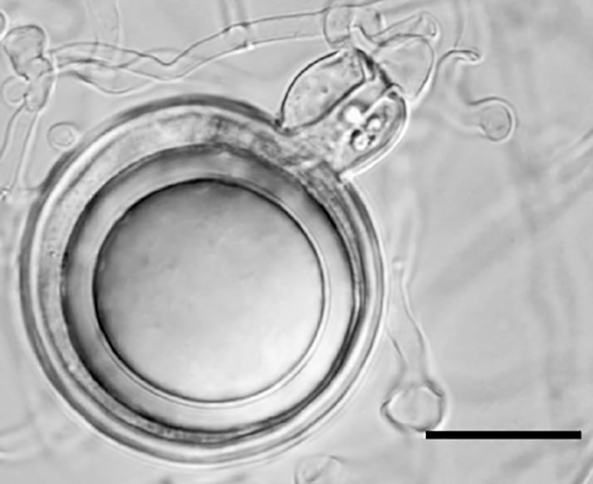 Phytophthora borealis nbsp;sexual phasenbsp;of the ex-type: oogonium, amphigynous antheridiumnbsp;and oosporenbsp;formed by isolate AKWA 72.3-0708 when paired with A2 tester of P. cryptogea ; Scale bar = 20mu;m; photonbsp;by Hansen et al 2012.
Phytophthora borealis nbsp;sexual phasenbsp;of the ex-type: oogonium, amphigynous antheridiumnbsp;and oosporenbsp;formed by isolate AKWA 72.3-0708 when paired with A2 tester of P. cryptogea ; Scale bar = 20mu;m; photonbsp;by Hansen et al 2012.
Phytophthora borealis sexual phase of the ex-type: oogonium, amphigynous antheridium and oospore formed by isolate AKWA 72.3-0708 when paired with A2 tester of P. cryptogea; Scale bar = 20μm; photo by Hansen et al 2012.
 Phytophthora borealis nbsp;asexualnbsp;phasenbsp;of the ex-type: nonpapillate persistent sporangianbsp;with internal proliferation; Scale bar = 20mu;m; photos by Hansen et al 2012.
Phytophthora borealis nbsp;asexualnbsp;phasenbsp;of the ex-type: nonpapillate persistent sporangianbsp;with internal proliferation; Scale bar = 20mu;m; photos by Hansen et al 2012.
Phytophthora borealis asexual phase of the ex-type: nonpapillate persistent sporangia with internal proliferation; Scale bar = 20μm; photos by Hansen et al 2012.
 Phytophthora borealis nbsp;sexual phasenbsp;of the ex-type: oogonia, amphigynous antheridianbsp;and oospores formed by isolate AKWA 72.3-0708 when paired with A2 tester ofnbsp; P. cryptogea ; Scale bar = 20mu;m; photonbsp;by Hansen et al 2012.
Phytophthora borealis nbsp;sexual phasenbsp;of the ex-type: oogonia, amphigynous antheridianbsp;and oospores formed by isolate AKWA 72.3-0708 when paired with A2 tester ofnbsp; P. cryptogea ; Scale bar = 20mu;m; photonbsp;by Hansen et al 2012.
Phytophthora borealis sexual phase of the ex-type: oogonia, amphigynous antheridia and oospores formed by isolate AKWA 72.3-0708 when paired with A2 tester of P. cryptogea; Scale bar = 20μm; photo by Hansen et al 2012.
Phytophthora spp. in subclade 2a: portion of the seven-loci ML phylogeny featuring the type cultures of 212 described species (by T. Bourret). Notice the position of P. botryosa Ex-type CBS 581.69 = S&T BL 132. Gloria Abad, USDA S&T.
Phytophthora spp. in subclade 2a: Morphological Tabular key (PDF) and Tabular key legends (PDF) in IDphy2 KEY SECTION. Notice the data of P. botryosa Ex-type CBS 581.69 = S&T BL 132. Gloria Abad, USDA S&T.
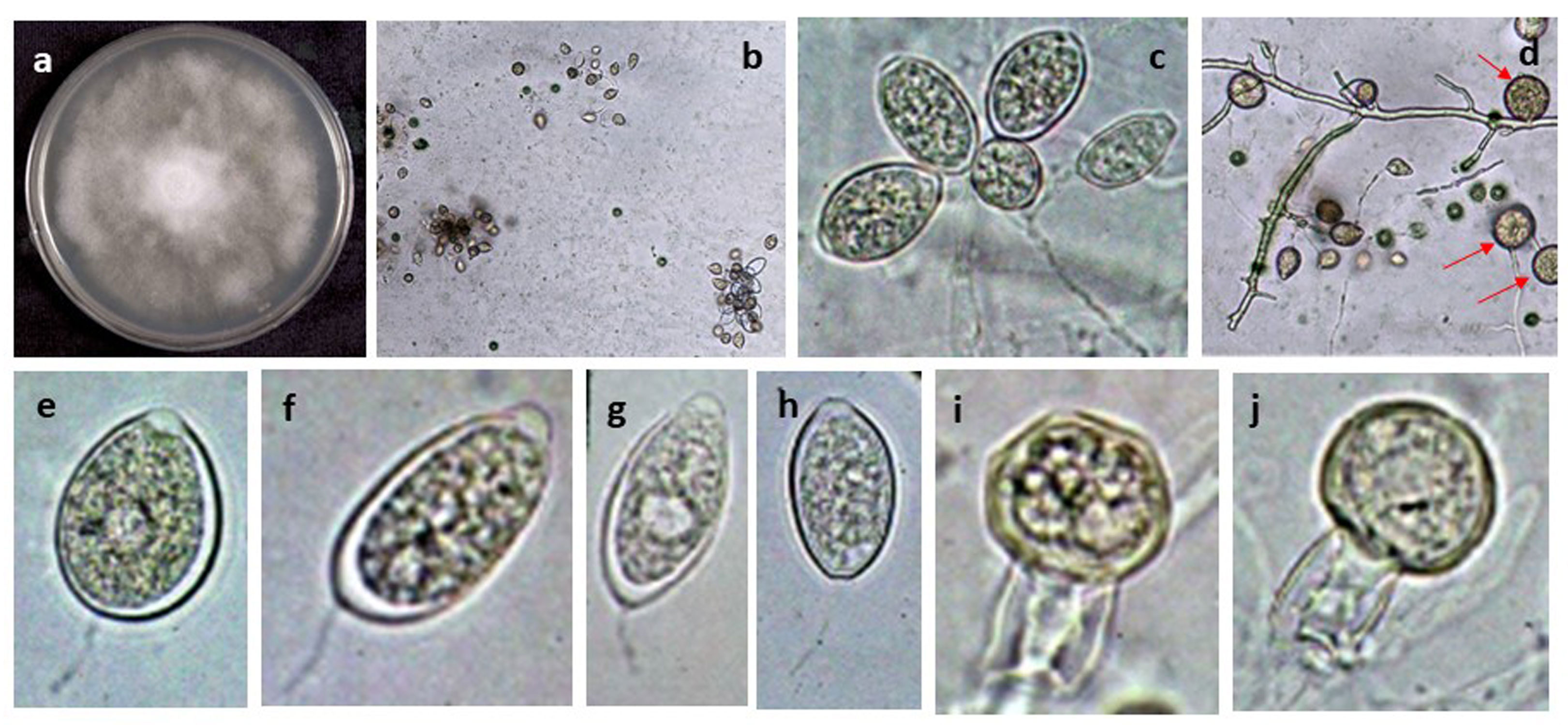 Phytophthora botryosa (Abad Ph450) selected specimen: (a) colony on V-8 agar, (b-h) semipapillated sporangia, (b) produced in botryose clumps, (c) sporangia produced in botryose simple sympodial sporangiophore; (e-h) sporangia with medium-length pedicel; (d) chlamydospores (arrows); (i, j) oogonia with amphigynous antheridia produced after pairings with opposite type; photos by G. Abad, USDA-APHIS-PPQ
Phytophthora botryosa (Abad Ph450) selected specimen: (a) colony on V-8 agar, (b-h) semipapillated sporangia, (b) produced in botryose clumps, (c) sporangia produced in botryose simple sympodial sporangiophore; (e-h) sporangia with medium-length pedicel; (d) chlamydospores (arrows); (i, j) oogonia with amphigynous antheridia produced after pairings with opposite type; photos by G. Abad, USDA-APHIS-PPQ
Phytophthora botryosa (Abad Ph450) selected specimen: (a) colony on V-8 agar, (b-h) semipapillated sporangia, (b) produced in botryose clumps, (c) sporangia produced in botryose simple sympodial sporangiophore; (e-h) sporangia with medium-length pedicel; (d) chlamydospores (arrows); (i, j) oogonia with amphigynous antheridia produced after pairings with opposite type; photos by G. Abad, USDA-APHIS-PPQ
Phytophthora spp. in subclade 8b: portion of the seven-loci ML phylogeny featuring the type cultures of 212 described species (by T. Bourret). Notice the position of P. brassicae Ex-type CBS 179.87 = S&T BL 8. Gloria Abad, USDA S&T.
Phytophthora spp. in subclade 8b: Morphological Tabular key (PDF) and Tabular key legends (PDF) in IDphy2 KEY SECTION. Notice the data of P. brassicae Ex-type CBS 179.87 = S&T BL 8. Gloria Abad, USDA S&T.
 Phytophthora brassicae (CPHST BL 8) colonies of the ex-type grown for 7 days on (a) V8reg; Agar, (b) potato dextrose agar, and (c) malt extract agar; photo by Krysta Jennings and Leandra Knight, USDA-APHIS-PPQ
Phytophthora brassicae (CPHST BL 8) colonies of the ex-type grown for 7 days on (a) V8reg; Agar, (b) potato dextrose agar, and (c) malt extract agar; photo by Krysta Jennings and Leandra Knight, USDA-APHIS-PPQ
Phytophthora brassicae (CPHST BL 8) colonies of the ex-type grown for 7 days on (a) V8® Agar, (b) potato dextrose agar, and (c) malt extract agar; photo by Krysta Jennings and Leandra Knight, USDA-APHIS-PPQ
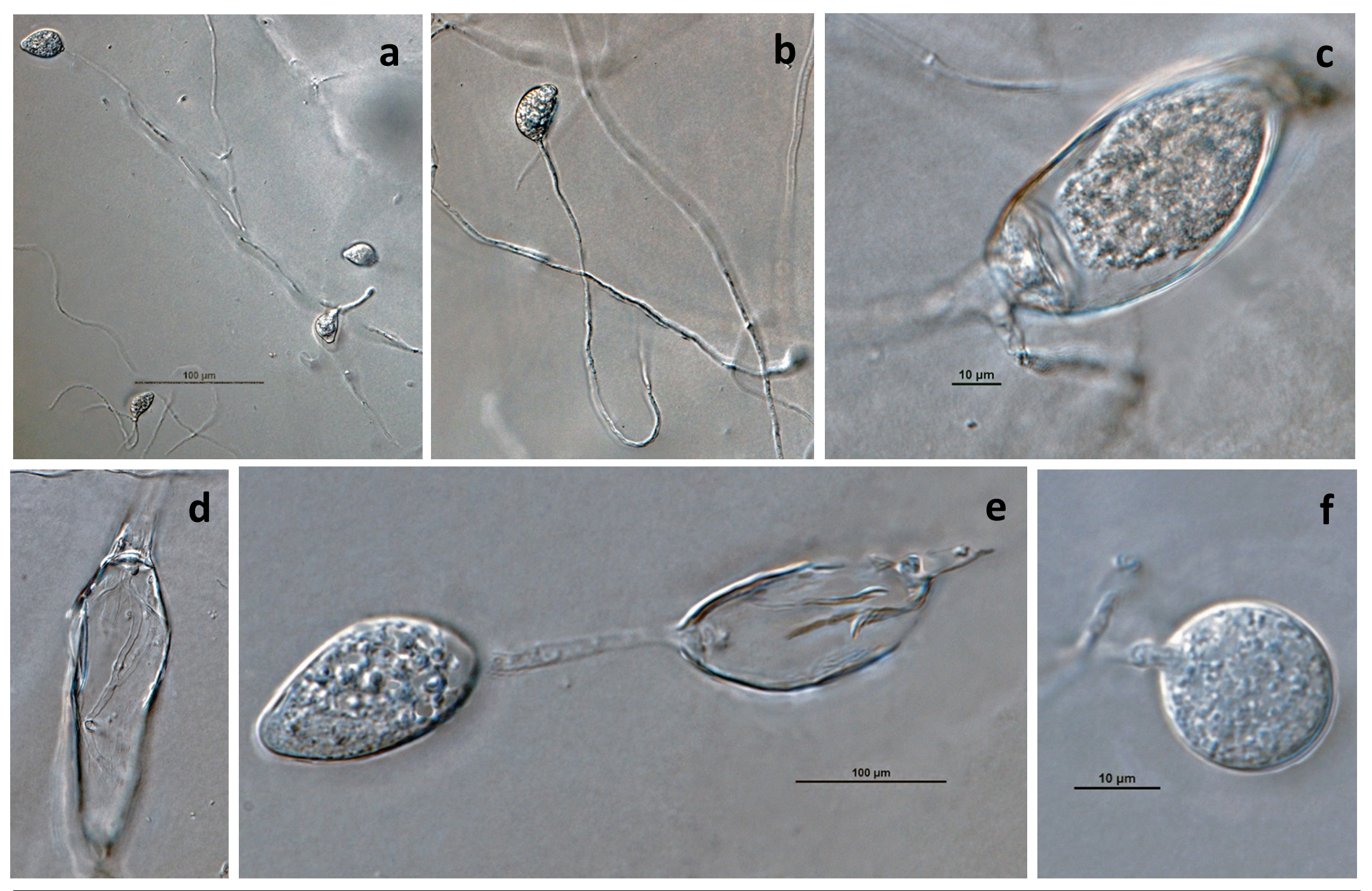 Phytophthora brassicae nbsp;ex-type CPHST BL 8, asexual phase (a-f): (a, b) sporangia produced in sporangiophores, (c) sporangium showing internal plug, (d) sporangium with internal proliferation, (e) sporangium with external proliferation, (f) globose sporangium; photos by G. Abad, USDA-APHIS-PPQ.
Phytophthora brassicae nbsp;ex-type CPHST BL 8, asexual phase (a-f): (a, b) sporangia produced in sporangiophores, (c) sporangium showing internal plug, (d) sporangium with internal proliferation, (e) sporangium with external proliferation, (f) globose sporangium; photos by G. Abad, USDA-APHIS-PPQ.
Phytophthora brassicae ex-type CPHST BL 8, asexual phase (a-f): (a, b) sporangia produced in sporangiophores, (c) sporangium showing internal plug, (d) sporangium with internal proliferation, (e) sporangium with external proliferation, (f) globose sporangium; photos by G. Abad, USDA-APHIS-PPQ.
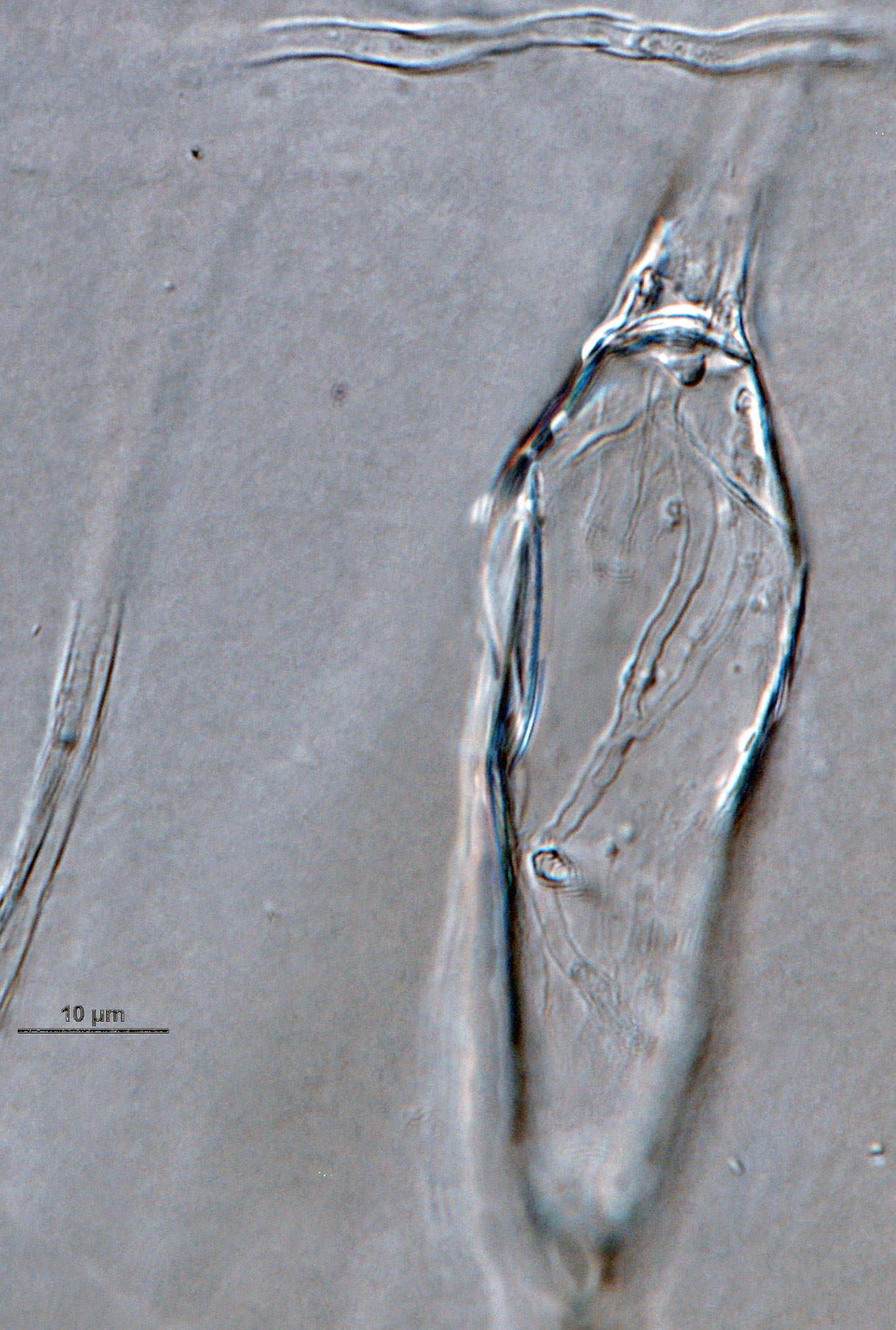 Phytophthora brassicae nbsp;ex-type CPHST BL 8, asexual phase: sporangium with internal proliferation. Photo by G. Abad, USDA-APHIS-PPQ.
Phytophthora brassicae nbsp;ex-type CPHST BL 8, asexual phase: sporangium with internal proliferation. Photo by G. Abad, USDA-APHIS-PPQ.
Phytophthora brassicae ex-type CPHST BL 8, asexual phase: sporangium with internal proliferation. Photo by G. Abad, USDA-APHIS-PPQ.
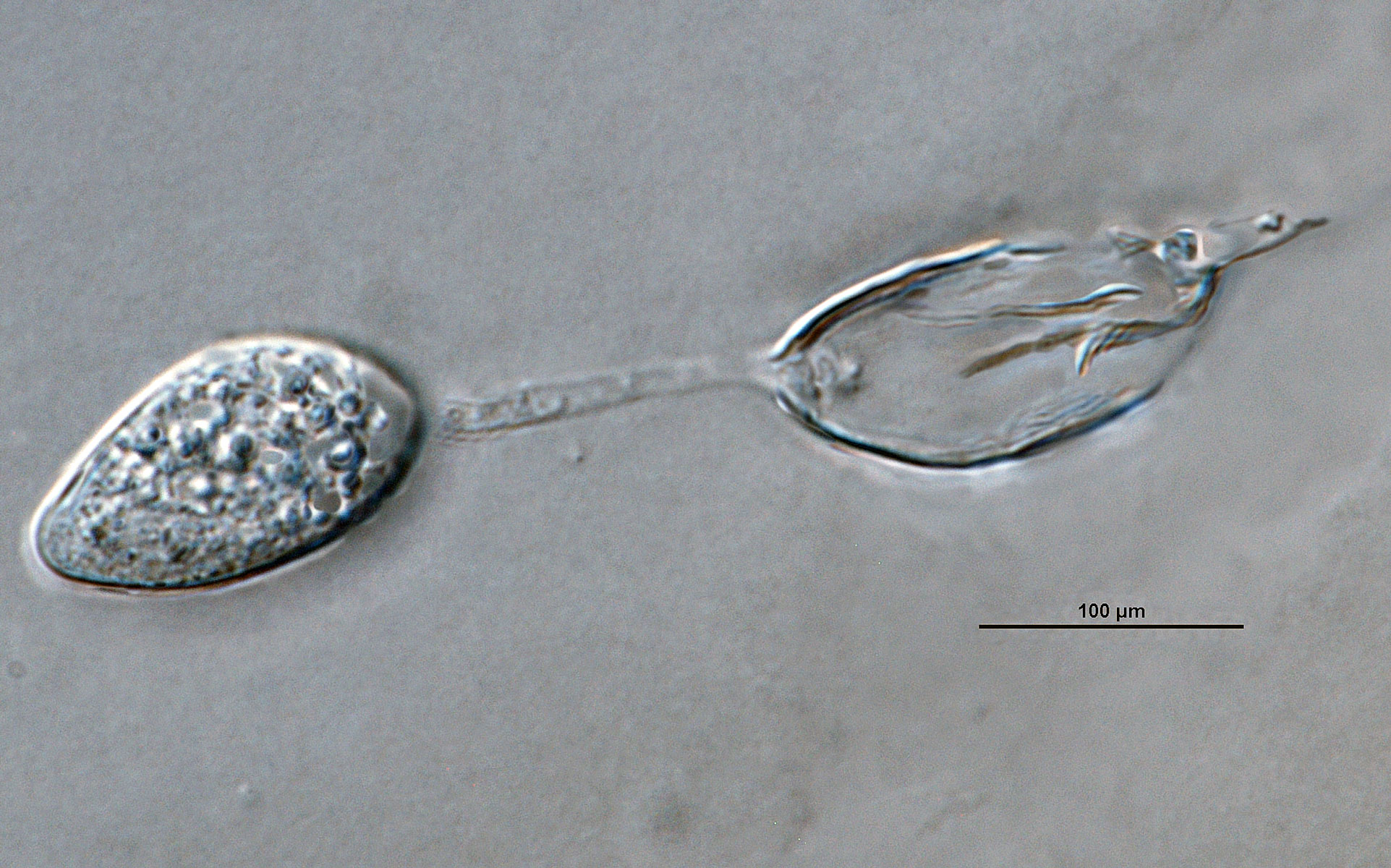 Phytophthora brassicae nbsp;ex-type CPHST BL 8, asexual phase: sporangium with external proliferation. Photo by G. Abad, USDA-APHIS-PPQ.
Phytophthora brassicae nbsp;ex-type CPHST BL 8, asexual phase: sporangium with external proliferation. Photo by G. Abad, USDA-APHIS-PPQ.
Phytophthora brassicae ex-type CPHST BL 8, asexual phase: sporangium with external proliferation. Photo by G. Abad, USDA-APHIS-PPQ.
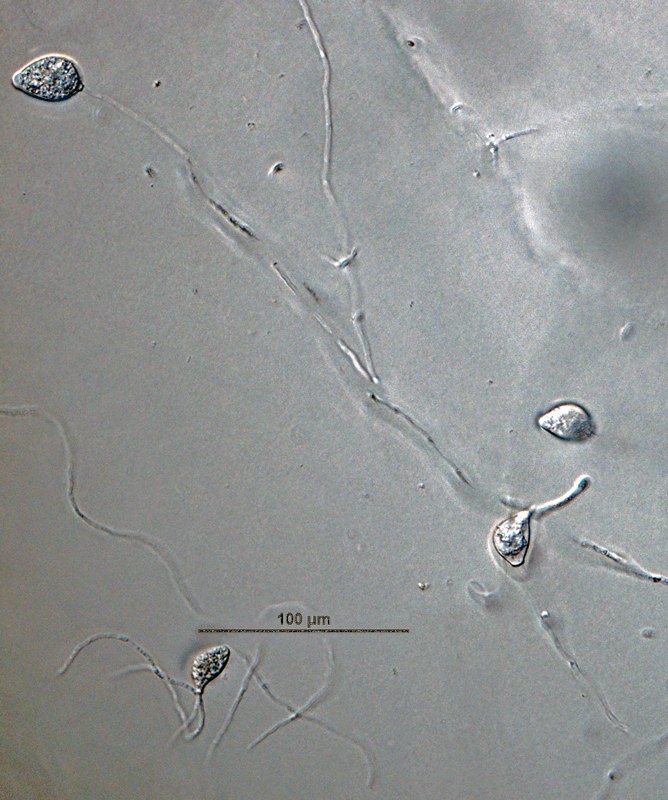 Phytophthora brassicae nbsp;ex-type CPHST BL 8, asexual phase: sporangia produced in sporangiophores.nbsp;Photo by G. Abad, USDA-APHIS-PPQ.
Phytophthora brassicae nbsp;ex-type CPHST BL 8, asexual phase: sporangia produced in sporangiophores.nbsp;Photo by G. Abad, USDA-APHIS-PPQ.
Phytophthora brassicae ex-type CPHST BL 8, asexual phase: sporangia produced in sporangiophores. Photo by G. Abad, USDA-APHIS-PPQ.
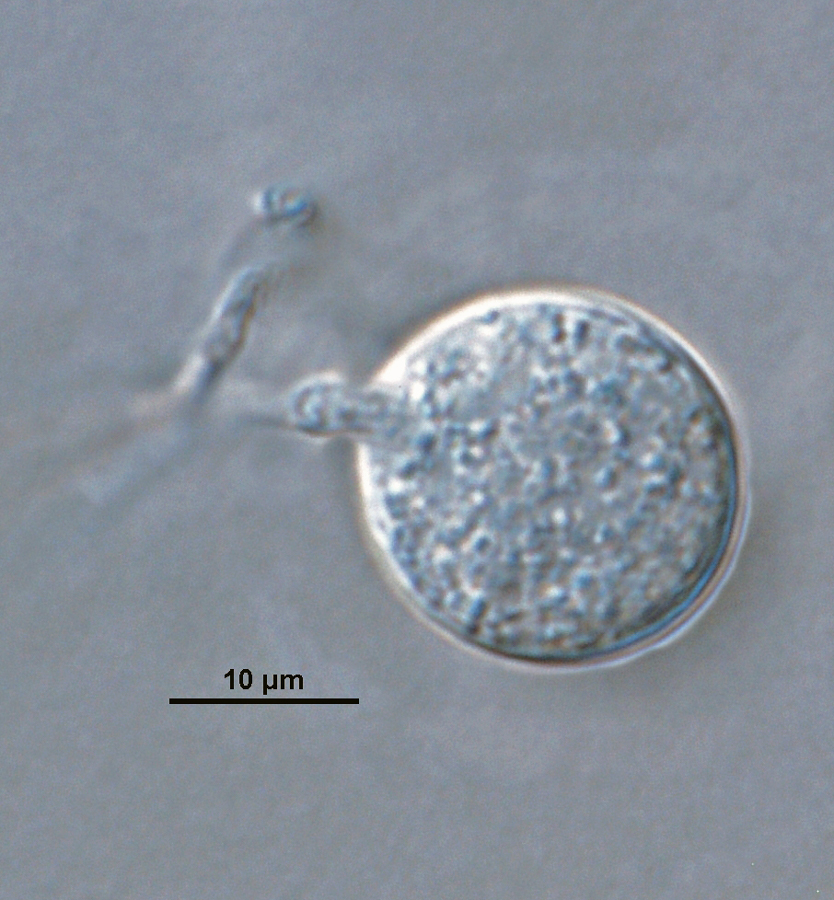 Phytophthora brassicae nbsp;ex-type CPHST BL 8, asexual phase: globose sporangium (chlamydospores absent in species).nbsp;Photo by G. Abad, USDA-APHIS-PPQ.
Phytophthora brassicae nbsp;ex-type CPHST BL 8, asexual phase: globose sporangium (chlamydospores absent in species).nbsp;Photo by G. Abad, USDA-APHIS-PPQ.
Phytophthora brassicae ex-type CPHST BL 8, asexual phase: globose sporangium (chlamydospores absent in species). Photo by G. Abad, USDA-APHIS-PPQ.
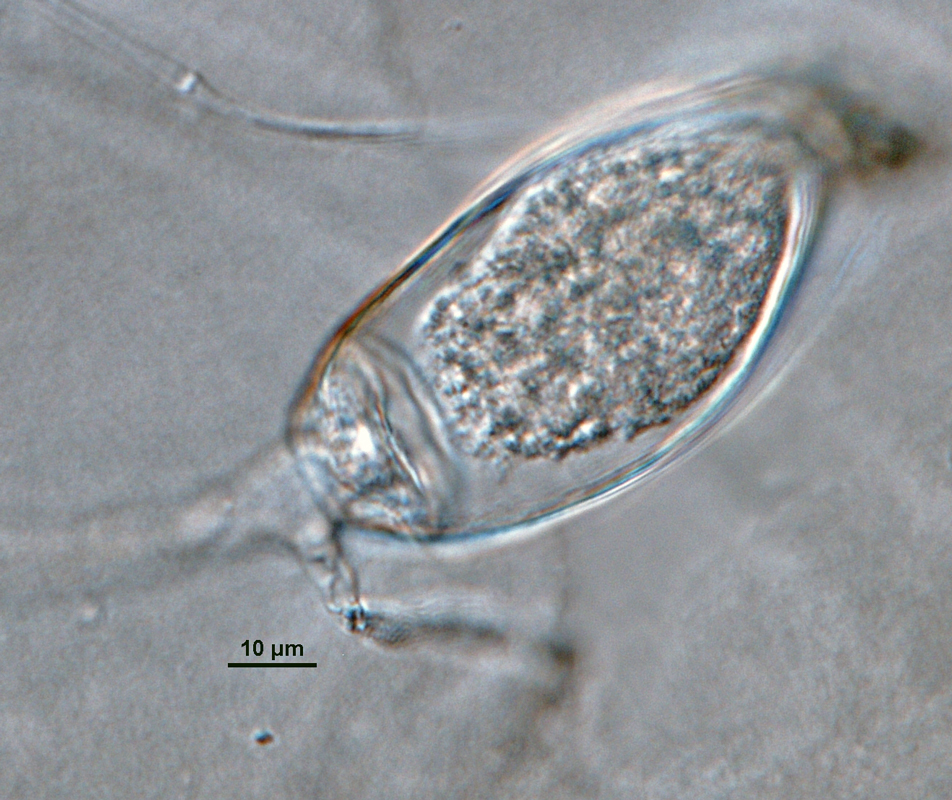 Phytophthora brassicae nbsp;ex-type CPHST BL 8, asexual phase:nbsp;sporangium showing internal plug. Photo by G. Abad, USDA-APHIS-PPQ.
Phytophthora brassicae nbsp;ex-type CPHST BL 8, asexual phase:nbsp;sporangium showing internal plug. Photo by G. Abad, USDA-APHIS-PPQ.
Phytophthora brassicae ex-type CPHST BL 8, asexual phase: sporangium showing internal plug. Photo by G. Abad, USDA-APHIS-PPQ.
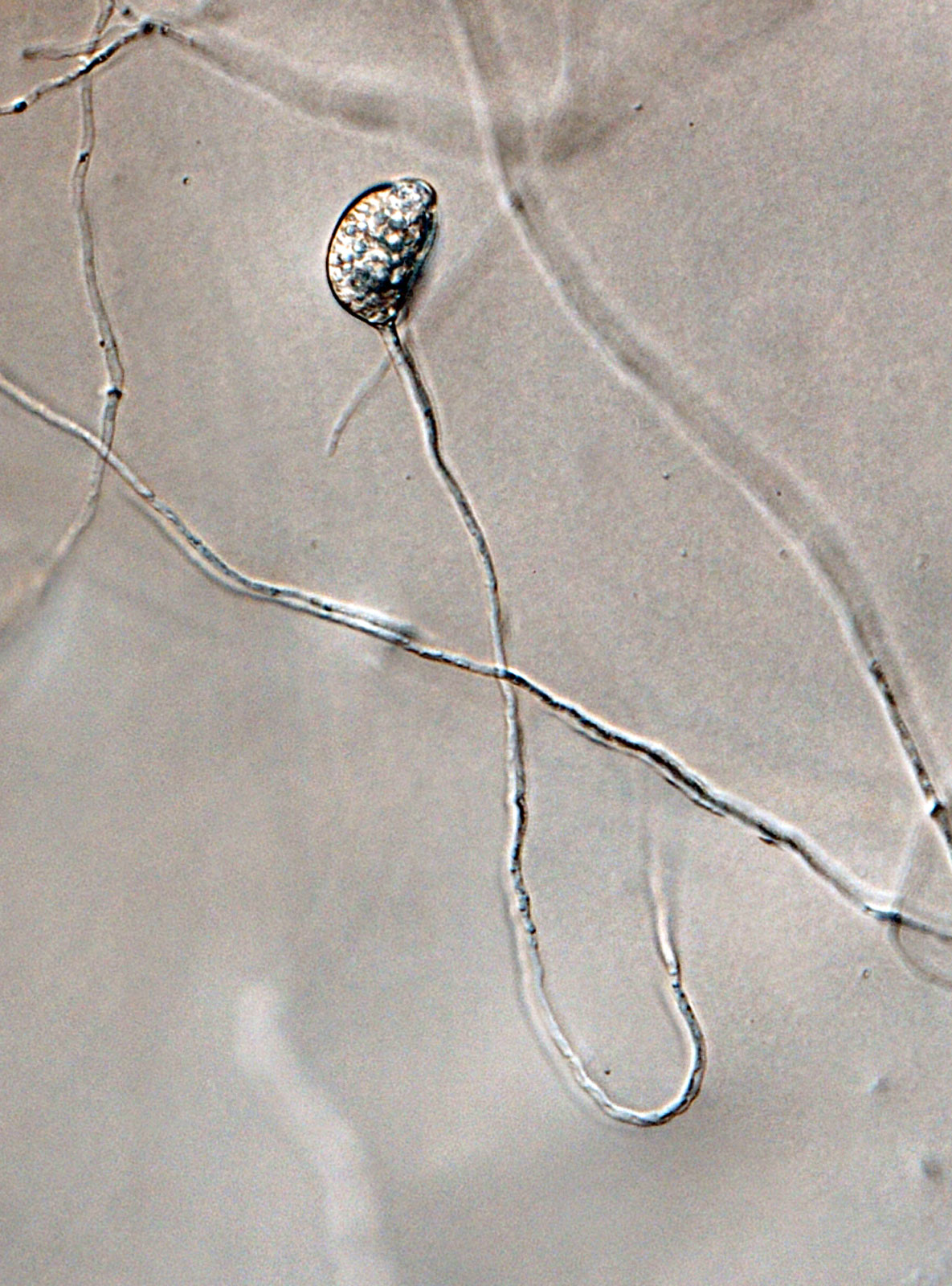 Phytophthora brassicae nbsp;ex-type CPHST BL 8, asexual phase: sporangia produced in sporangiophore. Photo by G. Abad, USDA-APHIS-PPQ.
Phytophthora brassicae nbsp;ex-type CPHST BL 8, asexual phase: sporangia produced in sporangiophore. Photo by G. Abad, USDA-APHIS-PPQ.
Phytophthora brassicae ex-type CPHST BL 8, asexual phase: sporangia produced in sporangiophore. Photo by G. Abad, USDA-APHIS-PPQ.
Phytophthora spp. in subclade 1a: portion of the seven-loci ML phylogeny featuring the type cultures of 212 described species (by T. Bourret). Notice the position of P. cactorum selected specimen CBS 231.30 = S&T BL 9. Gloria Abad, USDA S&T.
Phytophthora spp. in subclade 1a: Morphological Tabular key (PDF) and Tabular key legends (PDF) in IDphy2 KEY SECTION. Notice the data of P. cactorum selected specimen CBS 231.30 = S&T BL 9. Gloria Abad, USDA S&T.
 Phytophthora cactorum nbsp;(CPHST BL 9) colony of a selected specimen grown for 7 days on (a) V8reg; agar (b) potato dextrose agar (c) malt extract agar; photos by Krysta Jennings and Leandra Knight, USDA-APHIS-PPQ
Phytophthora cactorum nbsp;(CPHST BL 9) colony of a selected specimen grown for 7 days on (a) V8reg; agar (b) potato dextrose agar (c) malt extract agar; photos by Krysta Jennings and Leandra Knight, USDA-APHIS-PPQ
Phytophthora cactorum (CPHST BL 9) colony of a selected specimen grown for 7 days on (a) V8® agar (b) potato dextrose agar (c) malt extract agar; photos by Krysta Jennings and Leandra Knight, USDA-APHIS-PPQ
 Phytophthora cactorum nbsp;(CPHST BL 178) colony of a selected specimen grown for 7 days on (a) V8reg; agar (b) potato dextrose agar (c) malt extract agar; photos by Krysta Jennings and Leandra Knight, USDA-APHIS-PPQ
Phytophthora cactorum nbsp;(CPHST BL 178) colony of a selected specimen grown for 7 days on (a) V8reg; agar (b) potato dextrose agar (c) malt extract agar; photos by Krysta Jennings and Leandra Knight, USDA-APHIS-PPQ
Phytophthora cactorum (CPHST BL 178) colony of a selected specimen grown for 7 days on (a) V8® agar (b) potato dextrose agar (c) malt extract agar; photos by Krysta Jennings and Leandra Knight, USDA-APHIS-PPQ
 Phytophthora cactorum (CPHST BL 9) asexual phase formed on V8 agar flooded with soil extract (a-c):nbsp;(a) sporangia originated in lax sympodial sporangiophore, chlamydospore in bottom left (arrow), (b) papillate caducous sporangia with short pedicel, (c) papillate caducous sporangium with short pedicel, (d) chlamydospore; photos by G. Abad, USDA-APHIS-PPQ.
Phytophthora cactorum (CPHST BL 9) asexual phase formed on V8 agar flooded with soil extract (a-c):nbsp;(a) sporangia originated in lax sympodial sporangiophore, chlamydospore in bottom left (arrow), (b) papillate caducous sporangia with short pedicel, (c) papillate caducous sporangium with short pedicel, (d) chlamydospore; photos by G. Abad, USDA-APHIS-PPQ.
Phytophthora cactorum (CPHST BL 9) asexual phase formed on V8 agar flooded with soil extract (a-c): (a) sporangia originated in lax sympodial sporangiophore, chlamydospore in bottom left (arrow), (b) papillate caducous sporangia with short pedicel, (c) papillate caducous sporangium with short pedicel, (d) chlamydospore; photos by G. Abad, USDA-APHIS-PPQ.


